What is clabber milk?
Clabber milk is a naturally fermented milk product that can be eaten raw or used in recipes. It also has a little leavening power all on its own, so it’s great to add to baked goods.
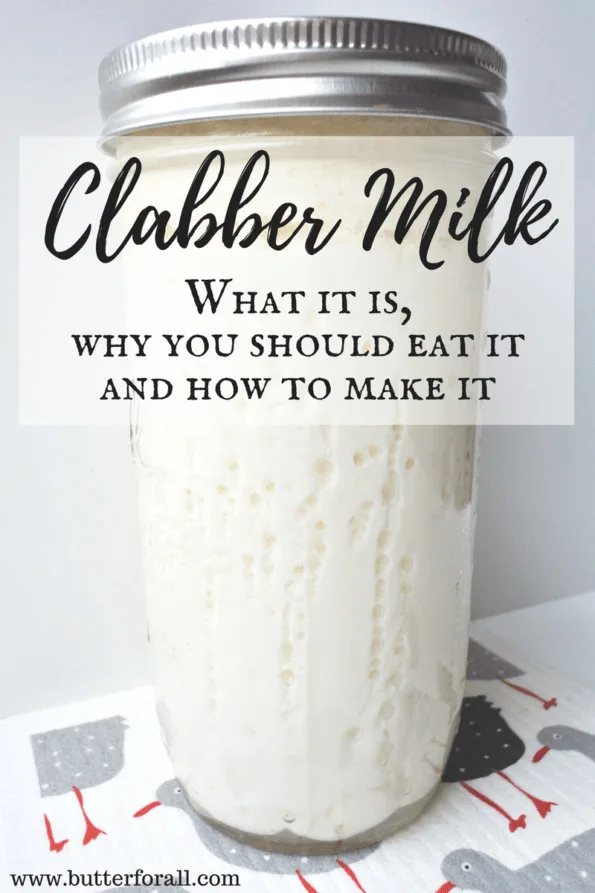
Raw cow’s milk is full of naturally occurring beneficial lactic acid bacteria. When that bacteria is supported with a warm environment, it will ferment the milk and create something like a cross between yogurt and kefir. Eventually, if left to ferment long enough, the clabber milk will separate into curds and whey.
Fermenting or souring milk is VERY different than having milk spoil. Spoiled milk only occurs if the beneficial bacteria found in clean raw cow’s milk have been killed by pasteurization, thus allowing mold spores or other contaminants to flourish.
In a fermented milk product, the lactic acid bacteria have soured the milk with the lactic acids they produce while consuming lactose. The higher acidity keeps other microbes that can be harmful to humans from growing. It is very important that you use only high-quality raw milk from clean grass-fed cows when making clabber milk.
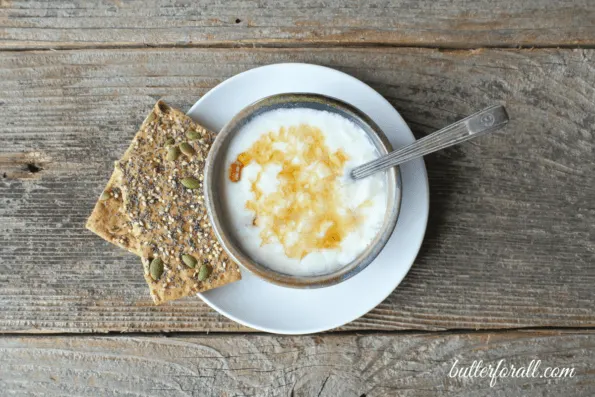
Clabber milk with honey
Why Should I Eat Clabber Milk?
In Harold McGee’s book “On Food and Cooking, The Science and Lore of the Kitchen” he elaborates on “The Health Benefits of Fermented Milks,” stating:
The standard industrial yogurt and buttermilk bacteria are specialized to grow well in milk and can’t survive inside the human body. But other bacteria found in traditional, spontaneously fermented milk-Lactobacillus fermentum, L. casei, and L. brevis, for example-as well as L. planetarium from pickled vegetables, and the intestinal native L. acidophilus, do take up residence in us. articular strains of these bacteria vPariously adhere to and shield the intestinal wall, secrete antibacterial compounds, boost the body’s immune response to particular disease microbes, dismantle cholesterol and cholesterol-consuming bile acids, and reduce the production of potential carcinogens.
Mr. McGee makes a good case for eating a variety of fermented foods other than commercially produced products.
Making Clabber Milk
The process is very simple.
Start by sterilizing a glass jar and lid in boiling water. To do so, fill your jar with hot tap water to avoid shattering the glass with the heat difference. Add the lid directly to the pan of boiling water, empty the jar of the warm water and pour boiling water into the warmed jar, and let it sit for a few minutes. Empty the jar and air dry the lid and jar on a clean towel. Let the jar and lid cool completely before using.
Add the raw milk to the sterilized jar and secure the lid loosely.
Ferment the raw milk at room temperature until the milk sours and starts to separate. This can take between 1 to 5 days depending on the age of the milk, the temperature in your home, and the natural bacteria in the milk itself.
When the clabber has solidified it can then be skimmed off the clotted cream, used for baking, eaten like yogurt, or strained to separate the curds from the whey.
- The curds and whey (left) next to the clotted cream
- The clotted cream
- A bubbly jar of clabber
- A cotton bag for separating the curds and whey
- The golden whey draining from the curds
After straining the clabber, the whey can be used as a starter for any lacto-fermented project from veggies to grains, and is especially useful for starting a new batch of clabber milk. Using a tablespoon of clabber whey in the new batch of milk will speed the fermentation process along considerably. The curds will thicken and sweeten with straining and take on a cream cheese-like texture.
Want To Learn Everything About Sourdough?
Start with this free guide:
Demystifying Sourdough – Everything You’ve Ever Wanted To Know About Sourdough Starter – Why It’s Better For You – And How To Start One
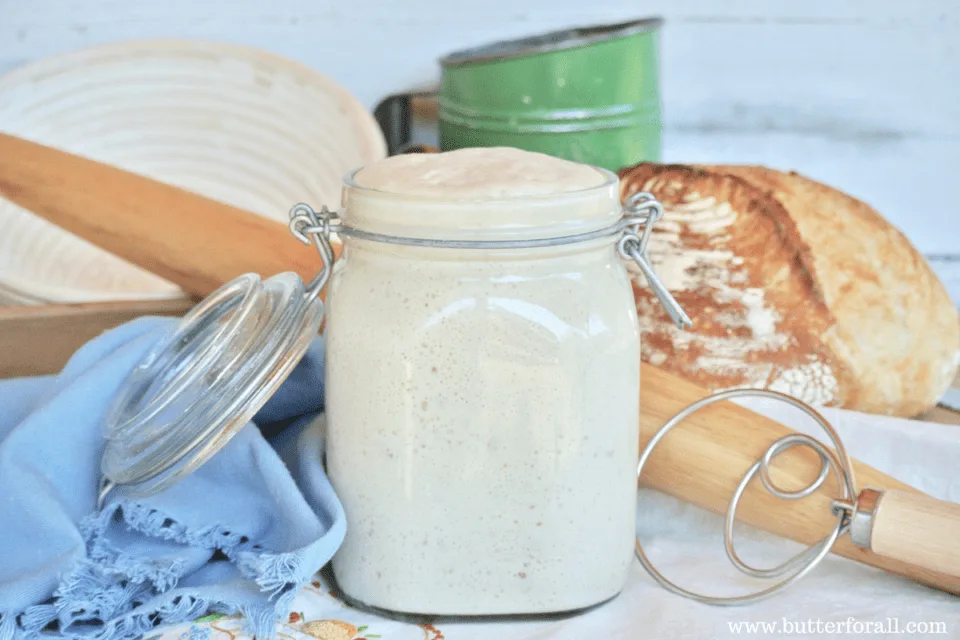

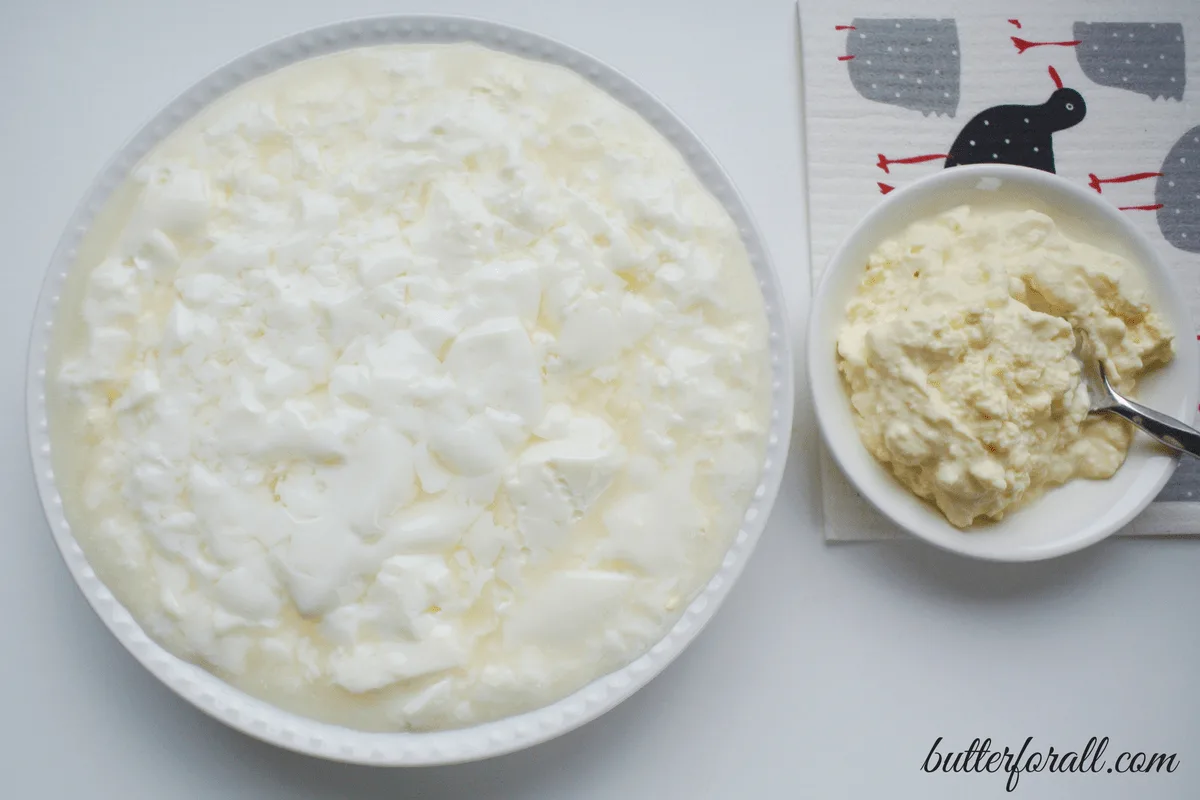
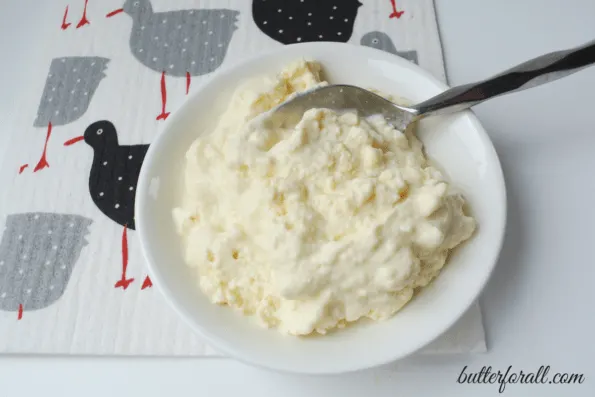
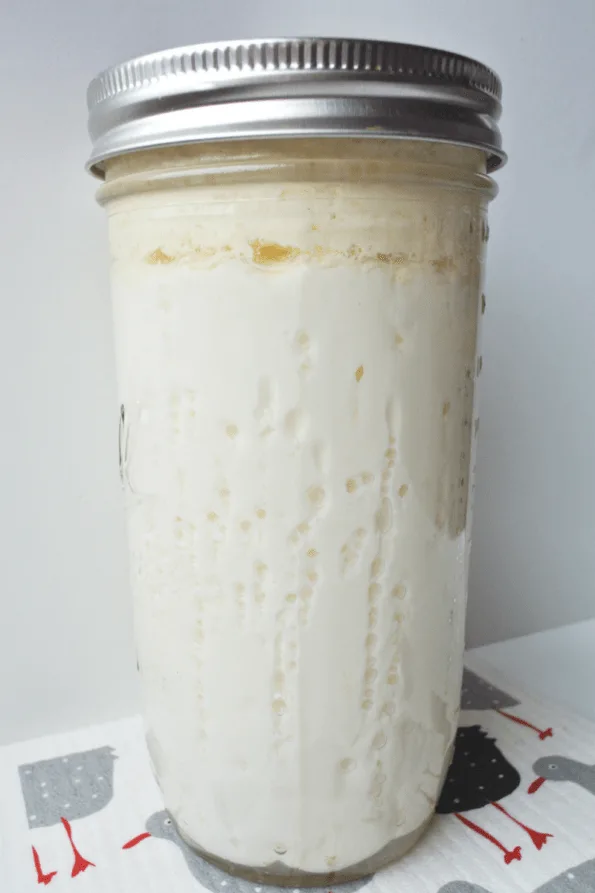
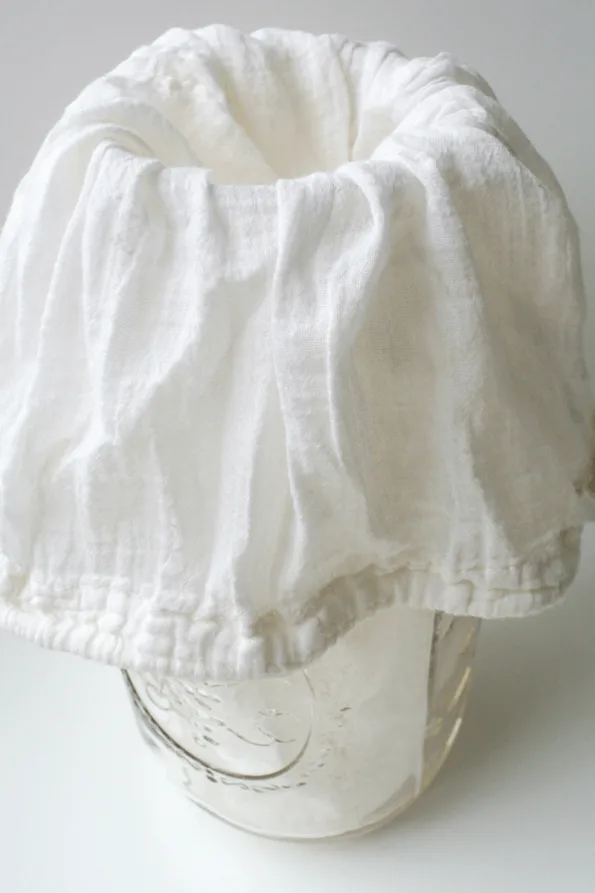
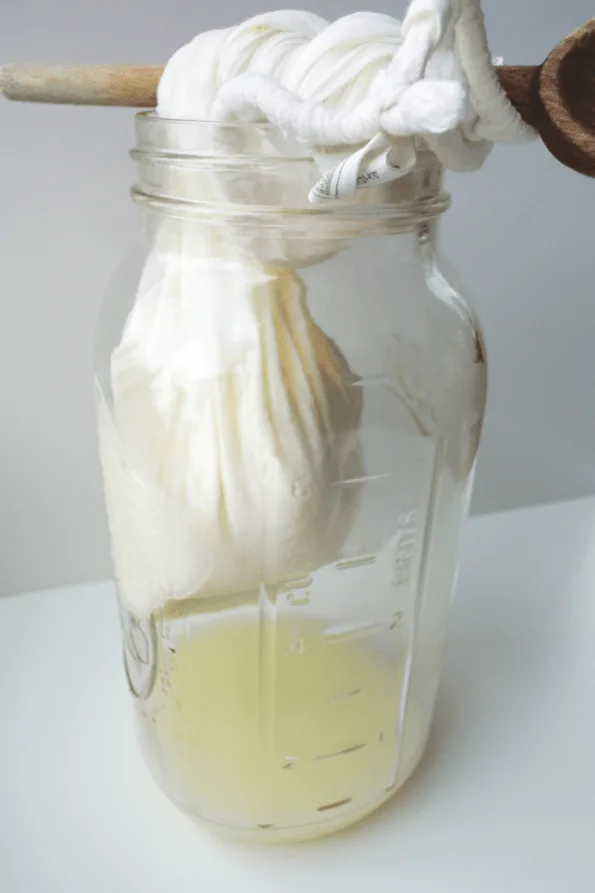
Cindy
Saturday 8th of March 2025
Thank you for this information. I just found raw milk and am now trying to make clabber. I have had the milk sitting out for 7 day. It is very cold this time of year in our house. I am finally starting to see action happen, but there are small black dots on the top. Is this normal? It has a slight sour smell that is not off putting. Maybe the black dots are part of the separation process?
Butter For All
Friday 21st of March 2025
Hi Cindy,
No, black dots are not normal. Any off colors should be a red flag. I would not consume that, too risky. Make sure you sanitize your jars and equipment with boiling water. It's also important to make sure your milk is coming from reliable and clean source before trying to clabber. I'm not implying that there was anything wrong with your sourcing, just a reminder for everyone. You might try adding a culture to make raw yogurt if you are still having trouble with clabber. Feel free to send me an email with photo if you'd like me to take a look at it. courtney@butterforall.com
Ozzie
Wednesday 20th of November 2024
Question, i’ve been adding honey to clabber my milk. I’ve really enjoyed the taste, alot less sour and almost sweet taste but I was curious. I did some research and many sites state to not use honey on kefir as “Honey should not be mixed with kefir, because its naturally antibiotic action will kill off the good kefir probiotics that you’re trying to get into your system.” I was wondering if that applies to claberring milk? i’ve had no issues been doing it for months now.
Butter For All
Wednesday 20th of November 2024
Hi Ozzie,
I don't know if that's completely true. There are a lot of probiotic ferments and cultures that use honey. Take Jun for example. I know that honey will sometimes work like an antimicrobial on certain strains of yeast and bacteria. But it seems that other strains and other strengths of yeast and bacteria do just fine with honey. I think if the milk is still clabbering with the addition of honey, then you shouldn't worry about it at all. If you're adding the honey when you're eating it then I seriously can't imagine it working that quickly either.
I hope that's helpful! Glad you're enjoying your clabber!
Heather
Monday 29th of January 2024
Hello! Thanks for the wonderful information. I'm on my 3rd attempt to clabber, and while I'm getting my raw milk to clabber in about a week (it's chilly here), the flavor is not something pleasant, quite sour, a little yeasty, a little like mild blue-cheese. I've read that eventually a quicker clabber results in a sweeter product, but I've also read that continuing to use this as starter will only perpetuate this flavor profile despite speeding it up. Any advice for improving the flavor? I read these comments about clabber with honey or cookies and I can't fathom that!
Pearl
Thursday 14th of November 2024
@Heather, if you set the jar into the oven with the light on, it will give you a warmer environment and should clabber quicker.
Oscar
Friday 22nd of March 2024
@Heather, eat it with tortilla, or simply with fried beans and eat it with it like if it was sour cream. I eat "leche agria"(clabber) every day.
Samrid
Friday 23rd of February 2024
@Heather, use raw milk only
Butter For All
Friday 9th of February 2024
Hi Heather!
That does sound a little offputting. I think you should probably start a fresh batch, and make sure that milk you're using is exceptionally clean. If the milk cow has any bacterium in the udders, it can proliferate in your culture. Clabber should be cheesy and may be slightly sour tasting and smelling, but not in a bad way, if that makes sense.
Beate
Sunday 28th of January 2024
Hello Chef Courtney, Just found your site. I just found raw milk in my community and have set aside 2 cups to make clabber. I have however just read that using the heavy cream may not work? If this is true can I add more milk on day 2 or 3 so it can get the right balance to feed on? And secondly, I read that we can repeat the process, to mature the product, by taking 1/2 cup of clabber, adding milk, continue to allow fermentation. By repeating this 6 to 7 times we get a sweeter clabber. Is this true and is my understanding of the process correct? And would each repeat be for 3 days each? Thanks.
Butter For All
Friday 9th of February 2024
Hi Beate,
Your whole raw milk should work well, unless you specifically skimmed the cream off and used just that. Like I said, if it's just whole milk, that's been thoroughly shaken to emulsify the separated cream, it will work well for clabber. You are absolutely correct, continuous fermentation will improve the consistency and flavor of the clabber. Fermentation time could be anywhere between 3 to 7 days, depending on your climate and the unique culture in your clabber milk. It's like a sourdough starter, it's alive, and you just need to observe it, taste it, and experiment with timing. Good luck!
Patricia
Sunday 31st of December 2023
Hi. My husband is lactose intolerant. Does clabbered milk have a lot of lactose left in it?
Butter For All
Tuesday 20th of February 2024
Hi Patricia, I would suspect that much of the lactose has been fermented away during the souring of the clabber milk. But, I do not have nutritional analysis on this, so proceed with caution.